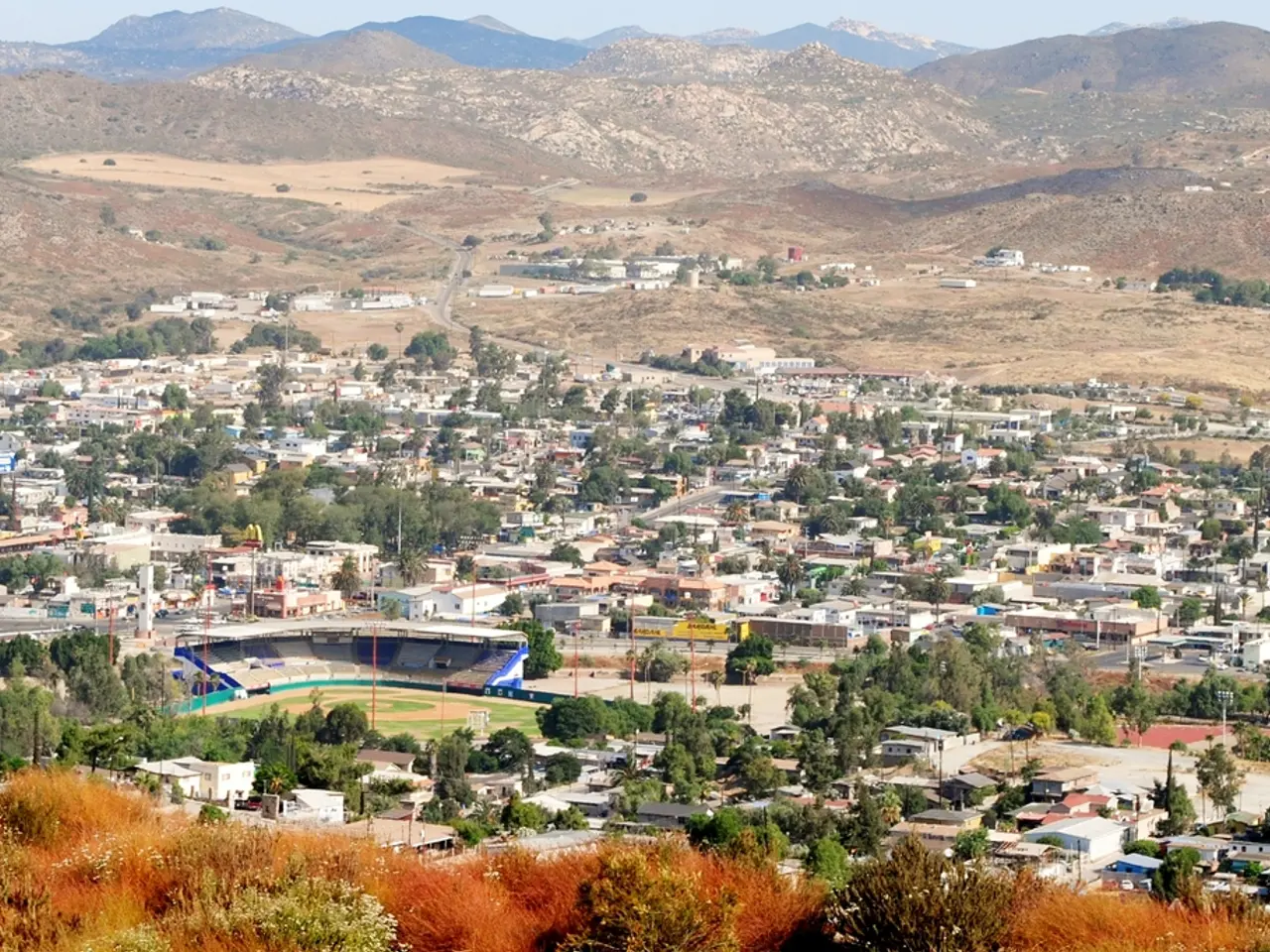Housing supply remains a pressing concern: Prospects for future accommodation remain hopeful
In the vibrant city of Los Angeles, two opposing ideologies are shaping the future of its housing landscape. These ideologies, each with its own set of advocates, are poised to influence the city's social and physical development over the next three decades.
On one side, there's an ideology that supports preserving single-family zones to maintain the suburban character and individual property rights. This perspective often emphasizes local control and property-owner prerogatives, opposing mandatory affordable housing requirements imposed on developers and restrictions perceived to erode property values. It also resists state mandates that aim to increase housing density, fearing these will undermine established communities.
On the other hand, there's an ideology advocating for increasing housing supply dramatically through rezoning, including allowing multi-family dwellings in formerly single-family neighborhoods. This vision supports state-mandated goals requiring more units to be built, including affordable housing components, and prioritizes housing equity and reducing homelessness. Proponents argue densification is necessary given soaring home prices, stagnant wages, and large renter populations.
The controversy is most pronounced in the rezoning of single-family home neighborhoods, which represent a longstanding cultural ideal and challenge this identity and neighborhood character. Many residents resist densification efforts that would allow more multi-family housing or increased housing units in these areas.
By 2050, these competing ideologies may have raised tens of billions of dollars through policies like Measure ULA, which, if used effectively, has the potential to solve many of the city's housing woes.
In the realm of real estate, the trend of co-buying, or groups of people buying homes together, is becoming more common due to the high cost of homes outpacing wages. This approach, facilitated by companies like CoBuy, could become a viable solution for aspiring homeowners in California.
Meanwhile, the lengthy permitting process for TIC properties makes it unattractive for many developers. However, with AI making the permitting process quick and painless by 2050, it could become easier for homeowners and developers to add density to their neighborhoods.
The Los Angeles City Council has given final approval to a sweeping rezoning plan, aiming to build an additional 255,000 homes. The new housing will be developed along commercial corridors and existing dense residential neighborhoods, leaving single-family zones largely untouched.
Senate Bill 9 makes it easier for California homeowners and developers to add density by splitting single-family lots in half and building duplexes, townhouses, and Accessory Dwelling Units (ADUs). Due to a handful of bills making ADUs easier and faster to build, there has been a significant increase in ADU applications since 2021.
As the city moves towards a denser future, parks and communal spaces will become more important. The Los Angeles Parks Foundation is working to ensure every Angeleno has a safe and accessible park to visit due to potential budget shortfalls. By 2050, parks and public spaces filled with people both day and night could be a reality, as envisioned by Jordan Lang, president of McCourt Partners.
In conclusion, the future of housing in Los Angeles is shaped by a tension between maintaining the existing single-family suburban model and embracing denser, more inclusive housing to meet state goals and demographic realities. The outcome will reflect differing values about property rights, community identity, and housing equity.
- The ideology that maintains single-family zones is rooted in preserving the suburban character and individual property rights, often opposing government mandatory affordable housing requirements and restrictions that may affect property values.
- In contrast, the ideology advocating for increased housing supply promotes rezoning to allow multi-family dwellings, supporting state-mandated housing goals and prioritizing housing equity and reducing homelessness.
- The controversy over rezoning single-family home neighborhoods is intense as it threatens the cultural ideal and neighborhood character held dear by residents.
- By 2050, policies like Measure ULA could potentially generate tens of billions of dollars to solve housing issues in Los Angeles.
- In the real estate sector, co-buying is increasingly common due to the high cost of homes in California and could become a viable solution for aspiring homeowners.
- The lengthy permitting process for TIC properties deters many developers, but AI could accelerate the process by 2050, making it easier for developers and homeowners to increase neighborhood density.
- The Los Angeles City Council has approved a plan to build an additional 255,000 homes, concentrating development along commercial corridors and existing residential neighborhoods.
- Senate Bill 9 allows California homeowners and developers to split single-family lots in half and build duplexes, townhouses, and Accessory Dwelling Units (ADUs), resulting in a significant increase in ADU applications since 2021 due to easier ADU construction bills.
- As Los Angeles moves toward a denser future, the importance of parks and communal spaces becomes crucial to ensure access for every Angeleno, even with potential budget shortfalls, as envisioned by Jordan Lang, president of McCourt Partners.




